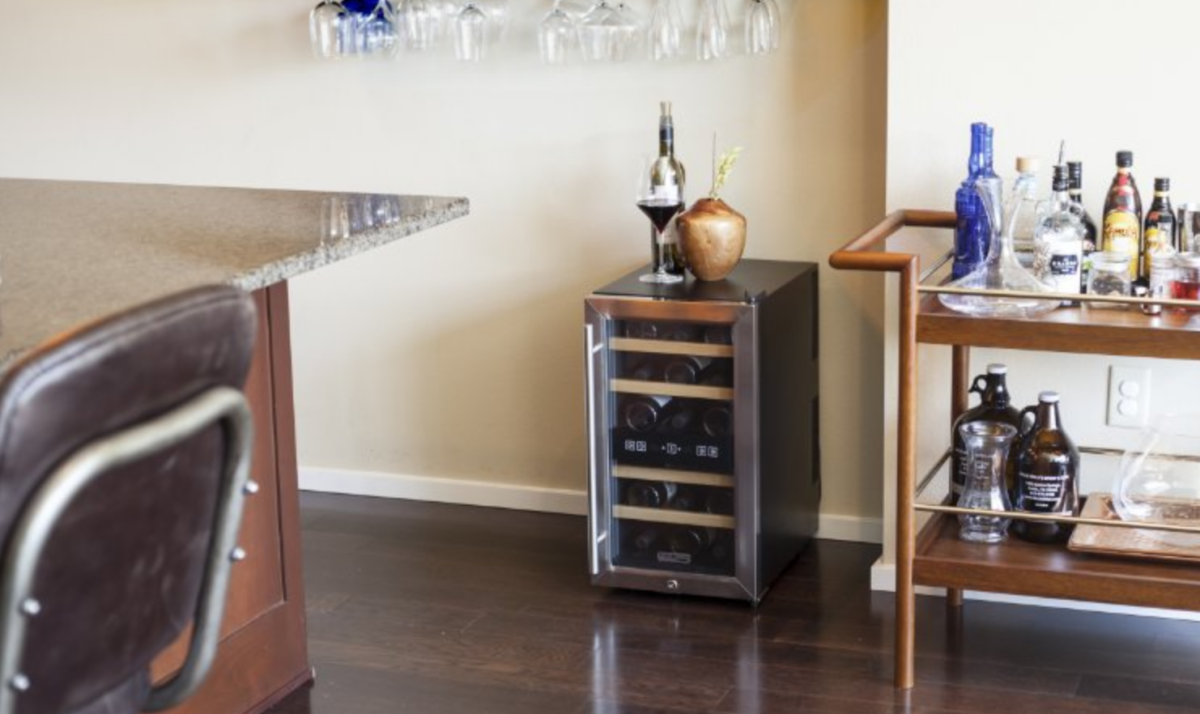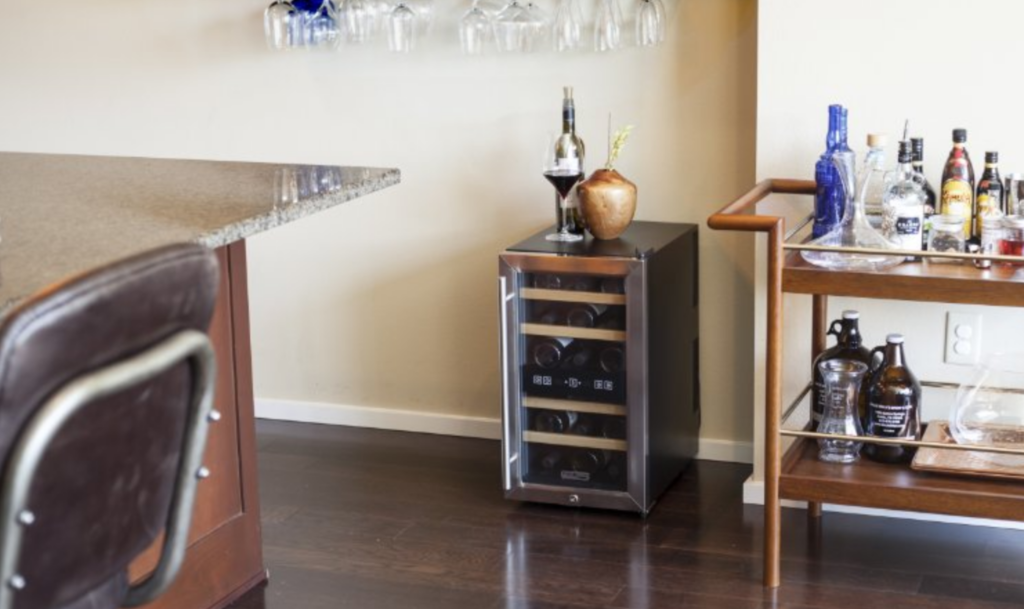For wine to have a good taste it needs to be stored under stable conditions. This is because wine is made of different chemicals which continuously react with each other in order to give the wine a better taste. If the wine is not stored under the correct temperature there will be an unbalanced reaction of the chemicals and this may ruin the taste of the wine. There are various ways of storing wine. However, most people are increasingly turning to wine coolers as a means of storing wine. This is because the wine cooler creates a perfect temperature which improves the taste of the wine and also the aroma. There are two types of wine coolers based on the technology used: thermoelectric wine coolers and compressor wine coolers. They both preserve wine but using different methods. As they both have their advantages and disadvantages, a common question when comparing compressor vs thermoelectric wine coolers is “which is better?”
Thermoelectric Wine Coolers
Thermoelectric wine coolers preserve wine using a peltier plate. The plate has two sides. One is hot and the other is cold, resulting in a heat transfer. The plate works in such a way that it absorbs warm air from the wine cabinets and disperses it out into the surrounding air.
Advantages of a Thermoelectric Wine Cooler
1. It is Energy Efficient – A thermoelectric wine cooler uses a peltier plate which uses little amount of electricity. The fact that it also has less moving parts also makes it use less energy. This benefits the user as well as the environment.
2. Quiet Operation – The fact that it has less moving parts makes it generate little noise when it is operating. This is convenient especially if the user is irritated by noise.
3. Vibration Free – Thermoelectric wine coolers do not vibrate at all. This helps them create a favorable environment for wine, especially if one intends to store wine for long.
Read Thermoelectric Wine Cooler Reviews HERE
Disadvantages of Thermoelectric Wine Coolers
1. Weak Cooling Levels – The peltier plate has weak levels of cooling. The peltier plate is often only able to store and chill wine at temperatures ranging from 55-65 °F and it can’t cool wine down more than 20°F below the ambient room temperature. This makes it inappropriate to use in a room which has higher temperatures because it will be overwhelmed in terms of cooling the wine.
2. Expensive Operation – Although they use less energy, thermoelectric wine coolers need to be on all the time and thus they increase the cost of operation.
3. Small Capacity – They are only convenient to use with wine refrigerators that have small capacity. This makes it expensive to use if you have a large amount of bottles that you want to cool.
Compressor Wine Coolers
These use a vapor compression cycle to eliminate heat from the wine cabinet. It has four parts; compressor, condenser, expansion valve, and evaporator. The compressor pressurizes gas, while the condenser releases heat into the environment. The expansion valve reduces air pressure, while the evaporator absorbs heat from the air which cools the wine.
Advantages of Compressor Wine Coolers
1. Powerful Operation – It has a powerful cooling capacity when compared to thermoelectric wine coolers. This makes it convenient to use with many built-in units. Many large capacity units also make use of compressors.
2. Handles High Capacities – The fact that they have a powerful cooling system makes it possible for them to be used with a large number of wine bottles. This is of great benefit to people who have a large collection of wine.
3. Adapt to the Environment – The compressor wine cooler is able to adapt to changing temperatures of the environment, and is able to maintain a stable internal temperature. If one intends to store their wine in the basement or in a place which isn’t insulated, then the compressor wine cooler is the best option.
Read Compressor Wine Cooler Reviews HERE
Disadvantages of Compressor Wine Coolers
1. Small Vibrations – They have many moving parts and as a result they vibrate slightly. This necessitates one to use rubber brushing in order to absorb the movements.
2. Slight Noise Output – The moving parts of the compressor cooler result in the production of some noise. It usually produces the same noise as that of a normal refrigerator. If you live in a small studio apartment, this extra noise may be enough to make you favor a thermoelectric cooling model instead.





